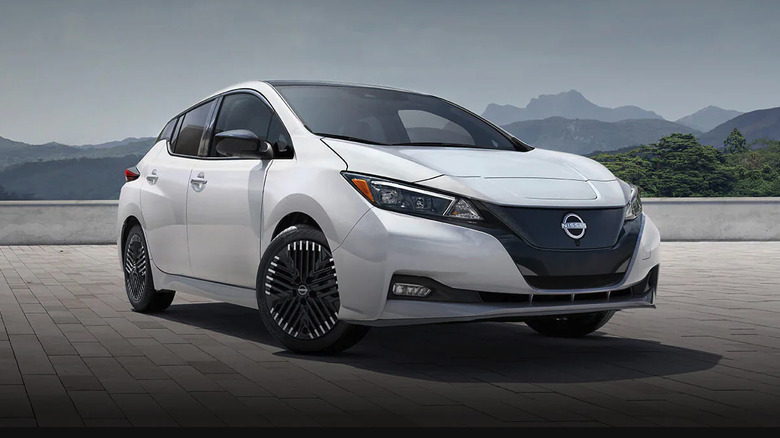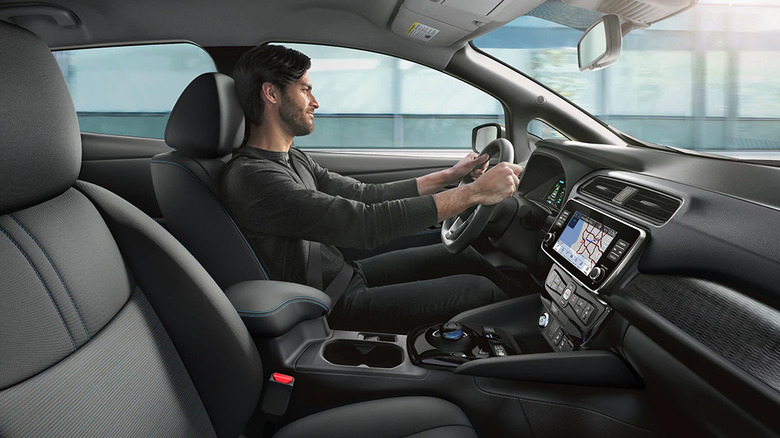Nissan's EV Name 'Leaf' Actually Stands For Something
Although Tesla is the first name that comes to mind when many of us think of electric vehicles (EVs), it's the Nissan Leaf that holds the distinction of being the world's first mass-market all-electric vehicle. While the first electric car is older than you'd realize, when the Leaf rolled off the production line in 2010, it put electric driving within the reach of everyday drivers. As Nissan said in the press release announcing the Leaf, it was "the world's first electric car designed for affordability and real-world requirements." Since its debut, Nissan has gone on to sell over 650,000 Leafs around the world, as the company reported in 2023. With the Leaf, Nissan did something that no automaker had done before it: prove that zero-emissions driving could work for the daily needs of ordinary drivers.
At the time of its release, many automakers still treated EVs as experimental projects or limited runs targeted at specific demographics. For example, the General Motors EV1 was only available through a small leasing program in the late 1990s before it was discontinued. What made the Leaf stand out was that it was a fully electric car designed for the masses that was priced to compete with gasoline-powered vehicles and practical enough for the daily commute. With all this history behind it, you may not know that the car's name isn't just a reference to its eco-friendly image; it's actually an acronym that stands for "Leading, Environmentally-friendly, Affordable, Family car."
What Leaf stands for and why it matters
While trees helping to clean the air may be the first thing that comes to mind when you see the word Leaf attached to Nissan's EV, the name is more than a shout-out to nature, it's also a statement about how the automaker's mission for this vehicle: creating a budget-friendly EV designed with families in mind. At the car's launch, Nissan had this to say about the name, "The 'LEAF' name is a significant statement about the car itself. Just as leaves purify the air in nature, so Nissan LEAF purifies mobility by taking emissions out of the driving experience."
If we look at the words that make up the acronym, we can see that they each seem to align with Nissan's vision for the EV. As the first mass-marketed EV, Nissan was a front-runner in the emerging EV market. Today, the Nissan Leaf is one of the five EVs with the worst range, but when it came out, few automakers had committed to producing EVs on a large scale. This allowed Nissan to establish itself at the forefront of the technology at the time. The Leaf's zero-emissions power train, which produces no tailpipe emissions, directly points to the environmentally friendly aspect of the acronym. Instead of releasing harmful exhaust like gasoline-powered vehicles, the Leaf helps reduce pollution and carbon output.
Affordability was key to Nissan's marketing strategy of making EVs accessible to mainstream consumers rather than pricing them as luxury products. Its base price, before applying the EV tax credit, was $32,780 in 2010, making it competitive with gas-powered cars. The 2025 Nissan Leaf S has a starting price of $28,140, making it cheaper than it was in 2010 and still has seating for five, a usable cargo area, and hatchback styling, which would certainly qualify it as a family car.

